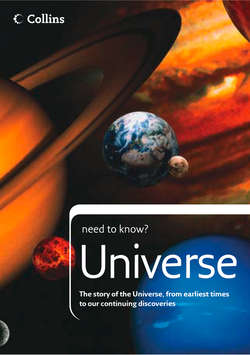Читать книгу Universe: The story of the Universe, from earliest times to our continuing discoveries - Peter Grego - Страница 64
Telescopic revelations
ОглавлениеHaving heard about a newly invented optical instrument that made distant objects appear larger, Galileo Galilei, a professor of mathematics at Padua University, ground and polished lenses to make small telescopes of his own by the end of 1609. Although a number of people had used telescopes in the months before Galileo placed his own eye to the eyepiece, Galileo is acknowledged to have been the first to turn the telescope to the skies to make scientific observations.
Anyone recalling their first telescopic views of the Moon and planets might conjure up some idea of how Galileo must have felt when he made his first observations through the telescope in 1609–10. Galileo’s telescopes consisted of two lenses mounted at either end of a tube – a plano-convex objective lens of about 30mm diameter at the front end to collect and focus light, and a smaller planoconvex eye lens at the other end to focus and magnify the image so that it can be viewed. Such an instrument is the most basic form of refracting telescope, yet despite it performing little better than today’s toy telescopes, Galileo gained amazing insights into the nature of the Universe. He discovered four small satellites orbiting Jupiter, which are still referred to as the Galilean Moons. Venus displayed phases, proving that it was a globe in orbit around the Sun. Sunspots proved that our central star is by no means perfect, and the Moon’s surface was revealed as a world with dark plains, craters and high mountains. Delving into deep space, Galileo observed that the glowing band of the Milky Way was made up of multitudes of faint stars.
must know
In the early 17th century Kepler formulated his famous laws of planetary motion, which stated that the planets orbit the Sun along elliptical paths and that they move faster when nearest to the Sun.
An observation of the Sun made by Galileo in July 1613 shows detail within sunspot groups.
